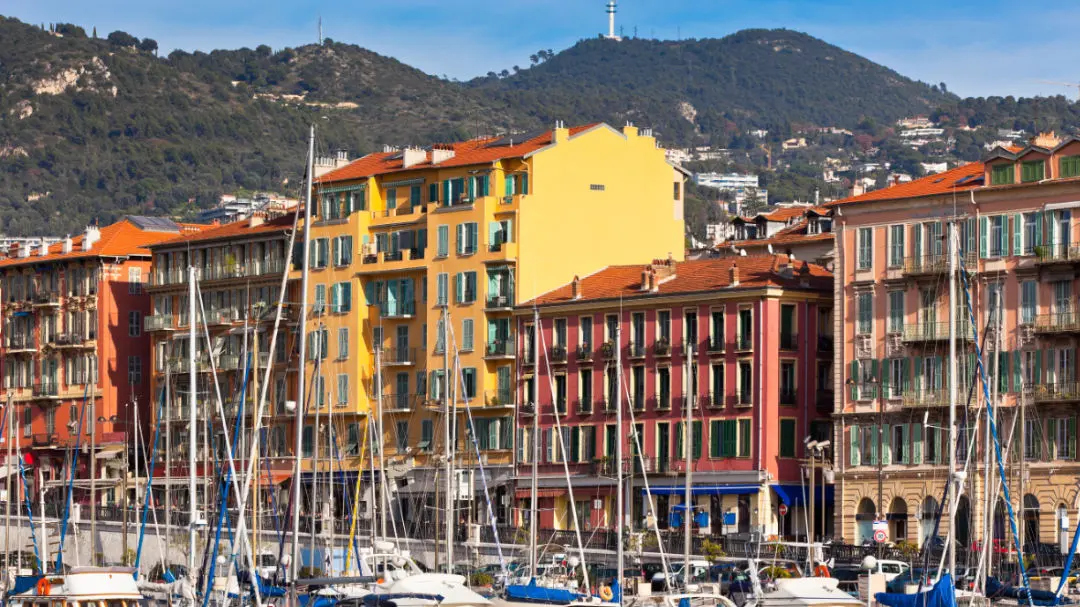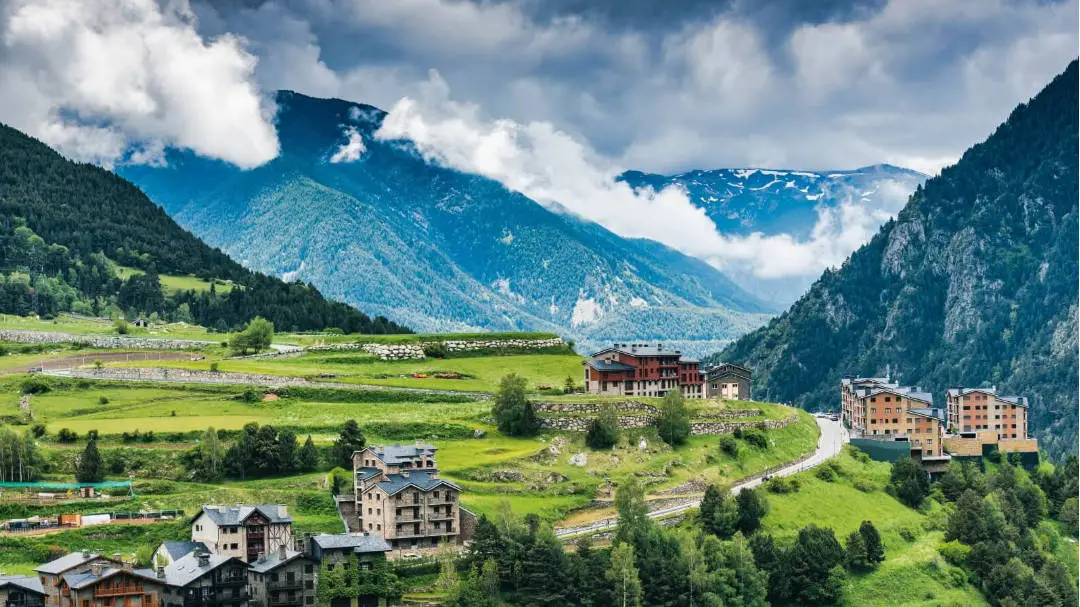Van Travel
There is so much to explore in Spain. An absolute firm favourite holiday destination for Brits and Europeans alike. People flock to Spain looking for their sun, sea and Sangria fix. With van life becoming all the rage in recent years, the climate of Spain being so inviting, and the ease of getting there, Spain has become wildly popular with the van life community. It’s easy to see why we travelled around Spain in our campervan in the early summer and had a fantastic time. We made this complete guide to campervans and motorhomes in Spain so that you could have a great time too! Here is everything you need to know about van life in Spain.

Beautiful Spanish Bridge, Sevilla
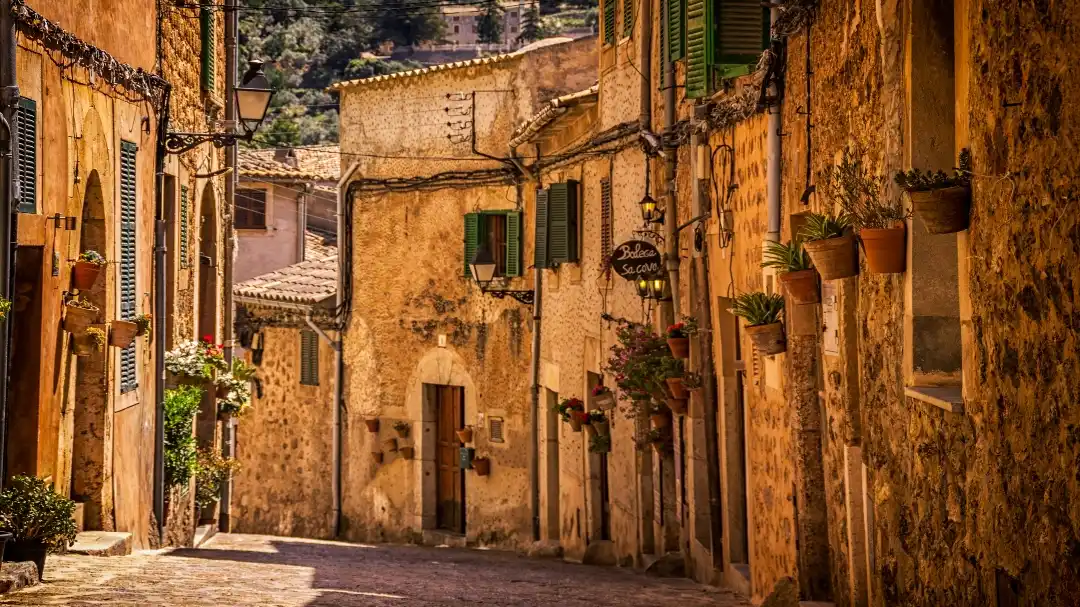
Authentic Spanish laneway, Valldemossa

Table of Contents
Spain
Whether that’s exploring Asturias or driving the Camino, there’s something for everyone. Spain is a country located in southwestern Europe on the Iberian Peninsula. It is the fourth largest country in Europe and the second largest in the European Union. Spain is known for its diverse geography, which includes the Pyrenees Mountains, the Central Plateau, and the gorgeous coastal plains. The country is also renowned for its rich cultural heritage and traditions, Mediterranean cuisine, and social people. you will receive a friendly and vibrant Spanish welcome.
Spain is divided into 17 autonomous regions, each with its own unique cultural identity, geography, and attractions.
Here are some of the most popular and well-visited regions:
- Catalonia
This region in northeastern Spain is home to the city of Barcelona and the Costa Brava, a scenic coastline dotted with charming towns and beaches. - Andalusia
This southern region is known for its historic cities, including Seville, Granada, and Cordoba, as well as its natural beauty, including the Sierra Nevada mountains and the Doñana National Park. - Basque Country
This region in northern Spain is known for its unique culture, including the Basque language and traditional cuisine, as well as its rugged coastline and scenic countryside. - Galicia
This northwestern region is famous for its lush green landscapes, historic villages, and pilgrimage routes, including the Camino de Santiago. - Valencia
This region on the eastern coast is known for its beautiful beaches, modern architecture, and the traditional Las Fallas festival. - Castilla y León
This central region is known for its historic cities, including Burgos, León, and Salamanca, as well as its rich cultural heritage and natural beauty. - Asturias
Is a region located in northern Spain, along the Bay of Biscay. It is known for its stunning landscapes, including the Picos de Europa mountains, lush green forests, and rugged coastline.
These are just a few of the many amazing regions worth visiting in Spain, and each one offers a unique glimpse into the country’s diverse cultural and natural landscapes.
People and culture
The Spanish people are a diverse and vibrant group with a rich cultural heritage. They are known for their love of socialising, especially over food and drink, and for their passion for music, dance, and festivals. Spain has a history of famous artists, writers, and architects: Pablo Picasso, Salvador Dalí, Antoni Gaudí, and Federico García Lorca, to name a few, who have made significant contributions to the world of art and culture. In places like Barcelona and Cadaques, you can walk through and experience this art first-hand.
Spanish people are a very social population, with food as the driving force that brings everyone together. It’s commonplace that dinner time, get-togethers with friends, and family meals can run well into the night. With that love of food, you will find incredible seasonal ingredients in your favourite Spanish dishes like paella, gazpacho, and tapas.
Best time to visit
If you are visiting Spain in a campervan and motorhome we would highly recommend going in either the Spring, Early Summer or Autumn. Basically anytime thats not the height of summer. There are a number of reasons for this: Going in spring, early summer and Autumn means you will beat the crowds. Spain can get incredibly crowded over the summer with holidaymakers from all around the world: if you are staying in campsites and aires (designated motorhome and campervan parking) they can get overcrowded and filled up quickly. you may find it hard to get a space. You will also beat the crowds when sightseeing and at the beaches. As well as beating the crowds, another good reason for travelling pre-seasons is you will beat the really severe hot weather which can be very uncomfortable in a campervan and motorhome. Last summer for many months Spain’s temperature was in the high 30C/86F and dealing with that in a contained metal vehicle can feel relentless. Summer in Spain in a campervan can be great but also an absolute struggle in the heat. Be aware and careful of how the heat might impact you and your van. Prepare your travels and plan accordingly.
Exploring
Things to see
Spain is home to many breathtaking destinations and attractions that are worth visiting. Here are a few must-visit places in Spain:
- The Spanish Costas
Costa Brava, Costa del Sol, and Costa Blanca are just a few of the many Coastal regions along the Mediterranean East coast. - Seville
This southern city is known for its stunning Alcázar palace, its historic Barrio Santa Cruz neighbourhood, and its iconic Cathedral of Seville. - Granada
This city in southern Spain is home to the Alhambra, a palace and fortress complex that is one of the country’s most iconic attractions. - Santiago de Compostela
This northwestern city is a popular destination for pilgrims making the Camino de Santiago, a network of ancient pilgrimage routes leading to the Cathedral of Santiago de Compostela. - Cadaques
A tiny hidden port town, which was home to Gaudi. - Spanish Pyrenees
Epic, towering and impressive mountains on the border of France - Empuriabrava
The Venice of Spain, is a stunning town with canals, expansive beaches and friendly people.
Spanish Islands
Spain has an abundance of beautiful tropical islands, all in the heart of the Mediterranean ocean. If it’s the island life you are after, Spain has got you covered. Here are a few major islands you can ferry over to with your vehicle.
The Canary Islands and the Balearic Islands have destinations where you can ferry your motorhome and campervan. It’s recommended that you do your research beforehand about where to stay and if camping in your vehicle is permitted. as well as this, the cost of the ferry can be quite expensive. Check operating ferries and costs here:
Local Cuisine
TAPAS, Sangaria, Chorizo need I say more? You probably already have a well-rounded knowledge of Spanish cuisine and local delicacies. When visiting Spain this is your time to stock up on all your Spanish favourites: chorizo, wine, Iberian ham, olive oil and cured meats, this list can go on for days. Spanish food is rich and vibrant and you can usually find traditional dishes like paella and spiced meats in restaurants. It is common to be served Tapas and small delectable flavourful dishes with drinks in Spain, this is the Tapas lifestyle: Little but lots (of Flavours and textures.)
Vegetarians and Vegans
Spanish cuisine and visiting Spain is surprisingly easy for veggies: there are usually a few tapas dishes with are vegetarian to order from like: Espinacas con garbanzos, Potatas brava, Padron peppers and the best dish all of time, ever… Gazpacho! I am vegan and I found Spain to be one of the best countries for vegan products. I found Spanish Supermarkets were well stocked with vegan food and most restaurants have a few vegetarian dishes and vege tapas options.
Madrid

Rooftop overlooking the Mediterranean Sea, Cadaques.

Van life, Spanish Islands.
Getting there
There are a few options for getting to Spain you can go by ferry or by road through neighbouring countries.
Ferries
UK- Spain: There are three ferry routes operating between England and Spain, offering you a combined total of 6 sailings per week with Britanny Ferries. The sailing can take up to 30 hours, and the prices can be costly, so it’s recommended you book well in advance. The cabins can get booked up quickly if you are travelling with pets. Due to the high price, many people choose to ferry over to France and then drive south into Spain.
Morocco- Spain: There are many ferry options to Spain from Morroco, with around eight ferry companies and a combined offering of eight ferry routes connecting Nador to Almeria, Motril & Barcelona, Tangier Med to Algeciras, Motril & Barcelona, Al Hoceima to Motril & Tangier to Tarifa. Book Your ferry and check prices here:
Italy- Spain: There are two operational ferry routes between Italy and Spain. One connects Barcelona – Genoa, operated by Grandi Navi Veloci and Barcelona to Civitavecchia, operated by Grimaldi ferries.
Borders
Roads and navigation
Van life in Spain: driving in a motorhome and campervan is safe and easy. Roads are generally well maintained. Routes are signposted in both English and Spanish, and you are well-connected via motorways and roads to most destinations, towns and cities. You may encounter tight, narrow roads through many of the villages and towns along the coast, but for the most part, travel and navigation isn’t a problem. There may be some height restrictions in parking areas but no more than elsewhere in Europe.
For now, no toll vignettes/stickers are required whilst driving in Spain, tolls can be paid for at use. Toll roads can be avoided using GPS, and Google maps always give you an alternate route to avoiding tolls (that’s usually the one we go for!)
There are low emissions zones in Barcelona and Madrid. To enter Barcelona on working days between the hours of 07:00 and 20:00, you must have a low emissions badge for your correct vehicle, and your vehicle must comply with Euro 3/ Euro 4 petrol emissions. Failure to do so will result in a fine. Madrid has similar restrictions. As of 2023, The Spanish government will introduce new low emissions restrictions, which could affect up to 150 municipalities. Read more about it and buy your badges here.
Road rules
Drive: Left-Hand Drive
Low emissions zones: Yes
Speed limits: In May 2021, Some of the speed limits changed and now they are a little confusing, here’s a short guide of what to expect:
- 120 km/h on motorways
- 120 km/h dual carriageways.
- 90 km/h on single-carriageway and country roads.
- 80 km/hr on urban motorways, they are usually signposted.
- 50 km/h in towns where the road has two lanes in your direction.
- 30 km/h in towns with a single lane in your direction.
- 20 km/h in towns where the ‘road’ and the pavement are on the same level.
Tollways & vignettes:
Not required. Pay as you go.
Fines & fixed penalties:
Check Here
Driving license requirements:
Check Here

Brightly coloured houses, Peralada

Marina, Empuriabrava

Gaudi’s House, Cadaques
Parking
You will be able to find paid parking in most areas you want to visit in Spain. There are plenty of motorway rest stops, service stations, and private parking sites for more secure parking. Many parking spots in towns and city centres are often free on evenings or Sundays (always check signs before.) Along the east coast, highly sought-after parking spaces are called “Blue Zones” (they usually have blue zone signs and blue parking lines to identify them, hence the name). These spots are usually close to the beach or in the city centres. They are free and have no restrictions for most of the year but come summertime, they are heavily restricted. The Summer season runs from the middle of June to the middle of September. Avoid those times, and you can park for free in many of the beach areas in Spain!
Routes and roadtrips
Regions
Depending on what you are after there is a route and road trip for everyone. With a diverse range of landscapes and attractions, making it a great destination for road trips. Here are a few popular routes and road trips in Spain:
- Costa Brava
This scenic coastal drive runs along the northeastern coast of Spain and takes in the beaches and towns of the Catalonia region. - Route of the sun
This route takes you through the sunny regions of Andalusia and Castilla-La Mancha, including stops in cities like Granada, Cordoba, and Toledo. - Camino de Santiago
This pilgrimage route takes you from the French border to Santiago de Compostela in northwestern Spain, passing through historic towns and rolling countryside. Usually completed on foot or by bicycle, however, you could drive it. - Basque Country
This road trip takes you through the rugged coastline and rolling hills of the Basque Country, with stops in cities like San Sebastián and Bilbao. - Picos de Europa
This mountainous route takes you through the stunning Picos de Europa mountains in Asturias and Cantabria, with hiking and outdoor activities opportunities. - Costa del Sol
This coastal drive takes you through southern Spain’s sunny towns and beaches, including stops in cities like Malaga and Marbella.
These are just a few of the many road trip options available in Spain, and each one offers a unique look into the country’s rich cultural heritage, natural beauty, and diverse landscapes.
Motorhome and campervan hire Spain
Here is a couple of reputable and trustworthy hire companies:
The outdoors
The aforementioned seventeen regions all work collectively to manage the outdoors in Spain. They offer their own unique laws that govern their regions. This means you must read the signage and double-check the laws wherever you travel.
As a general rule of thumb, Spain doesn’t usually allow wild camping, and you have to go to a designated campground. If you are on private land, always request permission.
Wild camping in your motorhome/campervan
Laws towards parking and overnight parking in Spain have become quite strict in particular regions over the years. Unsurprisingly the Mediterranean east coast is one of the regions where authorities are clamping down on wild parking. There are now many rules and regulations in place for wild parking or overnight parking.
As a general rule of thumb, wild parking is not permitted generally unless you are on a designated campground; what that means for campervans and motorhomes is, if you are wild camping try not to look like it; keep your chairs, table and washing lines inside if you can.
During Summer, wild parking along the coast is discouraged. It can be done, but you will likely be moved along or fined. If you plan to visit the coast during the summer, try to use campsites or avoid coastal areas. National parks also have a restricted zone for wild parking. National parks can be conservation zones or areas where wildfires break out, so restricted parking is for the benefit and safety of the environment. If you generally obey these rules, then you won’t have a problem with wild parking. Just make sure you always do your own research when you get to a place, always read and obey the signs in the area, and if you are on private land, ask the landowner for permission.
We wild-parked all the way along the Costa Brava at the beginning of June (before the blue zone restrictions) and found it to be totally doable, hassle-free and fun. We found Park4night an excellent resource, as always, and found wild park-ups, free spots by the beach, and paid-for parking spots.
Spanish Aires
Campsites
Another great resource is Camping Spain which lists a map of all campsites located in and around Spain. Suppose you are looking for something a bit more personalised than a campsite. Check out Homecamper. It is a fantastic website that offers unique parking on people’s private land at a minimal cost.
Campercontact is another valuable app to have whilst travelling around Europe! It has thousands of unique motorhome and campervan stops and campsites to stay in. It costs only €10.99 per year, and you have access to over thousands of places all over.
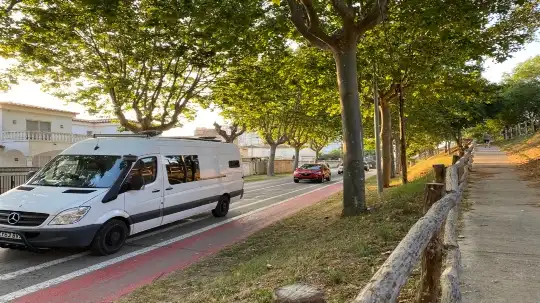
Overnight parking Empuriabrava

Blue Zone free parking by the beach
Shopping, supplies and amenities
Most motorhome and campervan supplies and stores in Spain are relatively easy to find. Use this index of Spanish Van Life Supplies.
Spain can be quite an affordable holiday, especially in a campervan! Costs are amongst the lowest in western Europe. The most common national and local supermarkets are:
- Carrefour
- Mercadona
- El Corte Inglés
- Aldi
- Lidl
- E.Leclerc
Camping stores
Spain has several outdoor stores that sell equipment and gear for van life, camping and outdoor activities: such as hiking, camping, and climbing. Some popular outdoor stores in Spain include:
- Decathlon
- GO Sport
- Sport Zone
- Intersport
- Camping Sport
- Trekkinn
Cost of living
Spain is considerably cheaper than the UK. It is quite reasonably priced for western Europe and its neighbouring countries. You can Van Life and live affordably if you shop locally and avoid overly touristic restaurants to eat in.
Average prices
- Coffee £1.54
- Milk £0.76 per litre
- Loaf of bread £0.96
- Potato (1kg) £1.10
- Meal for 2- mid-range restaurant £40.00
- Domestic Beer 1/2 litre £2.20
Public toilets
This is a free Public Toilet Locator Map. Another excellent toilet map is Pee.Place
Free water taps
You will find Water at Euro Relais stations, Campsites, aires and public water taps. Public taps have clean drinkable water. We like to use a few handy resources:
- DOPPER– lists potable water fountains and taps all around Europe.
- Park4night– lists water taps, usually ones you can connect straight to your vehicle.
- Watermap– is another global water tap resource.
- Reflowproject– An EU-based water tap index
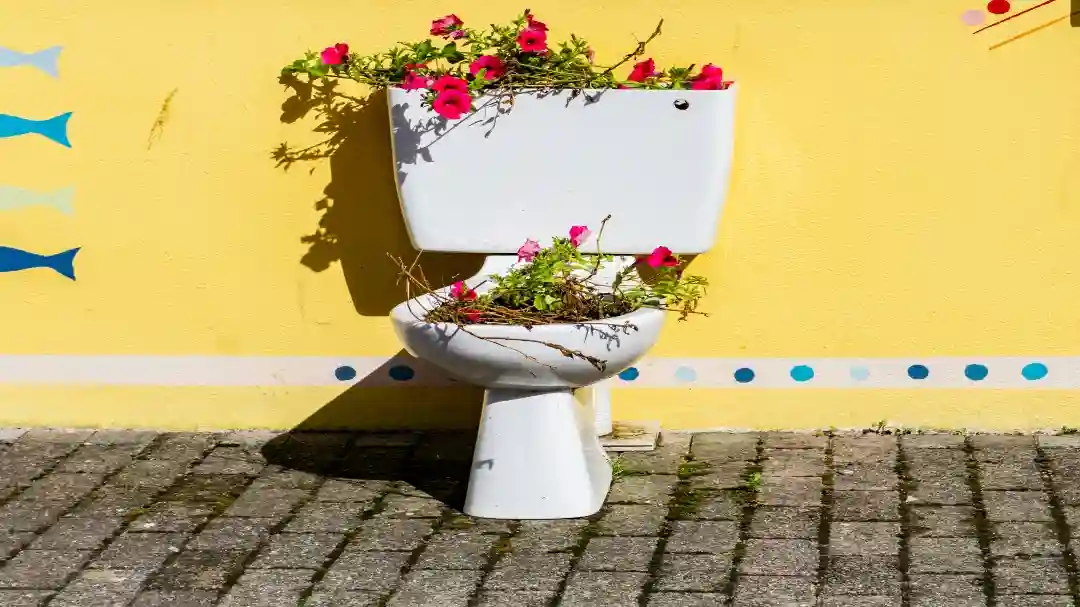
What a nice public toilet.

Avoid these signs
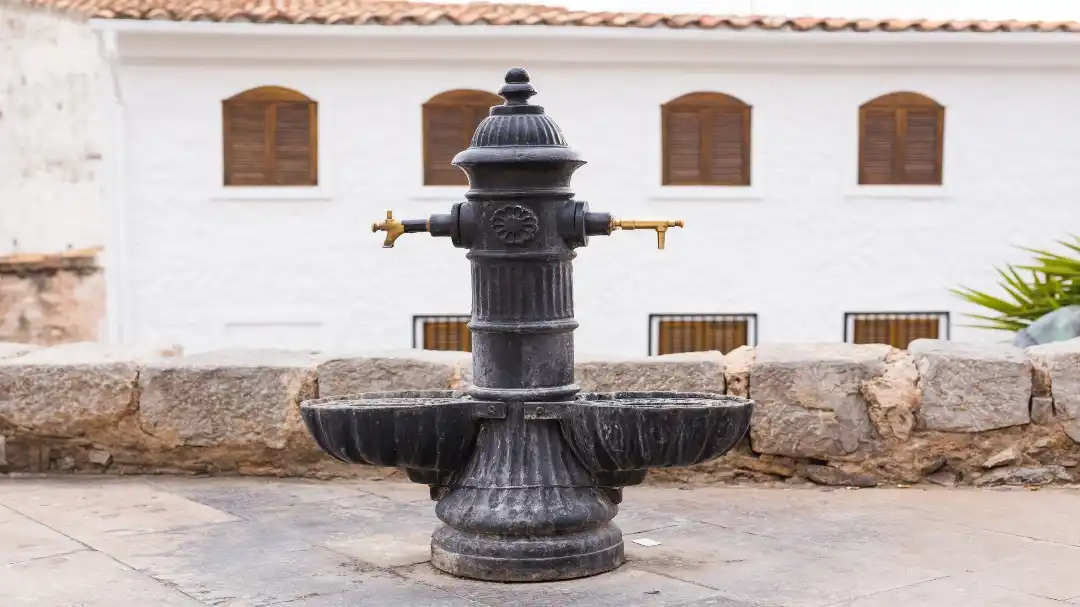
Water fountain for filling up.
Grey and black waste disposal
Lpg pumps
Not every petrol station has an LPG pump available. In Spain, LPG is very widely available. you can use this hand map to find one near you on the road.
Petrol stations
Budget for your next trip with this petrol calculator.
Cellular networks and wifi
Spain is one of the best countries in Europe for reliable internet. There are many choices for travellers looking to use their phones and data abroad. One of the most popular options is a HolaFly Esim card. This is probably one of the best travel sim cards available. There are many other options including vodafone, orange and movistar.
We used our EE Sim from the UK with EU data roaming and a netgear nighthawk router. which was a great option. We had no issues.
Emergencies and safety
The emergency number in Spain is 112
This is the emergency number for all of Europe, and all Operators speak English and will be able to communicate with you regarding any emergency. If you need urgent medical care and you have anEHIC or GHIC medical card for tourists, you will likely receive free or reduced emergency medical treatment. This card is a reciprocal medical emergency card for tourists travelling in the European Union. Spain is safe, and the crime rate is relatively low. However, as always, travelling in a motorhome and campervan does leave you vulnerable to break-ins and petty theft. Always have your wits about you when you leave your vehicle unattended, and invest in a good vehicle security system. If you notice suspicious behaviour, call the police and always keep your valuables locked in your safe. Be extra careful in areas of high tourism for pickpockets and leaving your van unattended at night. Use the app what.3.words to keep a tab on exactly where you are and share your locations with others if you need to.
If you need police, have been broken into or require assistance, you can contact the police on contact them online. If you get into a road accident or need roadside assistance, you can call or contact companies like RAC and The AA , which offer roadside assistance all over Europe. It’s recommended you have a good insurance policy, and you can always call them for advice.
Travelling with pets Spain
Spain is a really pet-friendly country. You will find many dog parks and dog-friendly cafes and restaurants. Many people own pets, and attitudes towards pets are generally positive. You may find a few stray dogs from time to time, but more often, you will notice the stray cats’ population. They are, however, usually well looked after and cared for.
Just like the rest of Europe, these are the travel requirements for bringing your pets to Spain:
- Up-to-date vaccinations
- Up-to-date Rabies vaccine (given at least three weeks before travel) travel within 12 months.
- Microchipped
- Animal Health Certificate and/or a Pet Passport

Van life couple with dog

Cat in carrier
We hope you enjoyed reading as much as we enjoyed writing, please feel free to sign up or leave a comment below if you enjoyed the read!
